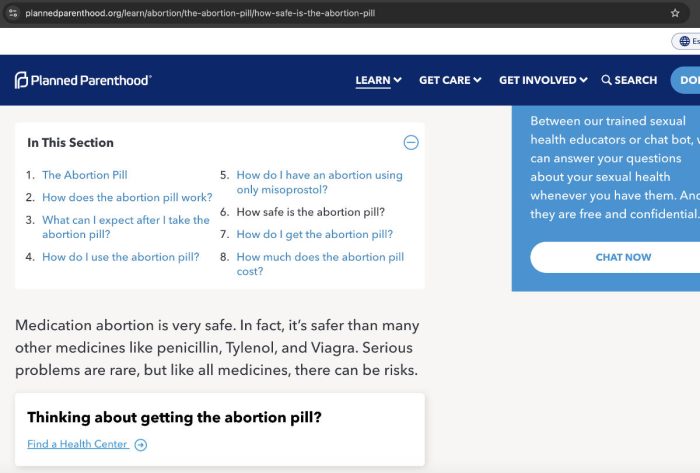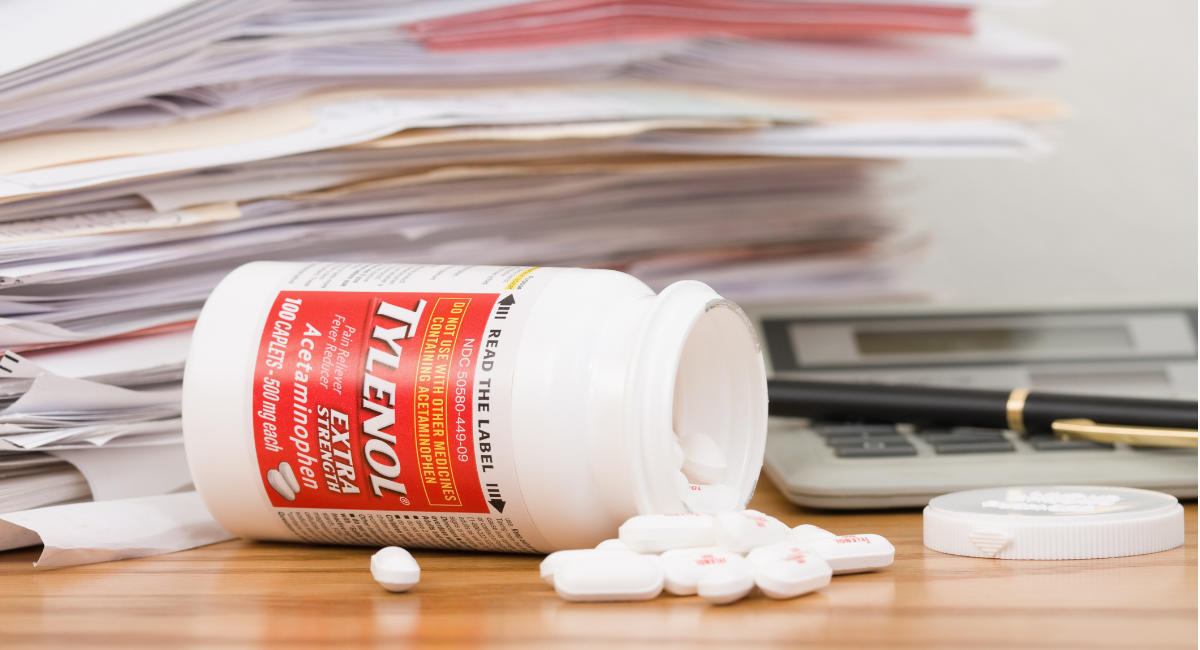A newly released study on complications of the abortion pill claims that “serious adverse events” from mifepristone occurred at a rate about 22 times higher than the rate reported by the Food and Drug Administration (FDA). Yet, for years, Planned Parenthood, its representatives, and its friends in the media have claimed that the abortion pill is safer than Tylenol.
The study, “The Abortion Pill Harms Women,” published by the Ethics and Public Policy Center (EPPC), reviewed data from an insurance claims database that included 865,727 mifepristone prescriptions that were written from 2017 to 2023. Mifepristone is the first drug in the two-drug abortion pill regimen. Researchers found that 10.93% of those abortions caused serious adverse events, including hemorrhaging, infection, and sepsis, in contrast to the FDA’s mifepristone label, which states that there is a “less than 0.5 percent” serious adverse events rate. That data included single-payer insurance claims as well as Medicaid, Medicare, TRICARE, and the Department of Veterans Affairs. It excluded “transactions for which the insurer is also the provider (as is the case with some HMOs and much VA care), as well as cash pay transactions (which are disproportionately common for abortion).”
Based on this data analysis, that would mean one in ten women experience at least one serious complication from taking mifepristone within 45 days — 22 times higher than the “less than 0.5 percent” serious adverse events rate reported by the FDA on the mifepristone label, according to this study. The study authors state that serious adverse events in multiple categories were accounted for in the reported rate.
Meanwhile, Planned Parenthood claims on its website that the abortion pill is safer than Tylenol. As previously reported by Live Action News:
[Tylenol] is taken millions of times annually by prescription, and its over-the-counter sales reach into the billions of dollars. Many times more people are using this drug every day than are using mifepristone; it is therefore disingenuous to make a safety claim based solely on a comparison of raw hospital visit numbers for both drugs. It’s entirely possible that more people go to the hospital after taking Tylenol – because more people take it in the first place.

Screenshot: Planned Parenthood
A 2016 study found that .056% of Tylenol doses sold resulted in a hospital visit. However, the new abortion pill study, completed using real-world data, found 4.73% of women who used mifepristone for an abortion ended up visiting an emergency room — an 84 times higher rate.
‘Safe and relatively painless’?
Kristen Farrell shared with Live Action News that her experience with the abortion pill was “the most horrifying and humiliating experience” of her life. She was 23 years old when she took the abortion pill during what would be her third abortion. She was told it would be “safe” and “relatively painless.”
“It was neither,” she said. “… there was the quick onset of excruciating, mind numbing pain. It was so bad that I ran to the toilet, calling on my roomate, to stay there with me. I felt as if my entire abdomen was being squeezed, crushed and wrung out like a wet rag. The thought that I could possibly die during an abortion crossed my mind, and I became terrified. The pain was so bad that I began dry heaving, groaning and crying, saliva dripping from my mouth. I remember blood and pain, nothing else. The minutes seemed like hours, but eventually, I passed something (I don’t know what) and the pain faded. I can’t remember too much after that, but a few days later, I was back to work.”
But while working as a waitress, the bleeding got heavier and heavier. She changed pads and tried everything to contain it, but nothing worked. She continued:
… I assumed I was hemorrhaging and tearily accepted help from some fellow cocktail waitresses who offered to walk me to the locker rooms. As we walked back, I could feel the blood rushing down my legs, for all to see. Once I got into the locker room, I locked myself into the largest bathroom stall and continued to pass massive blood clots. There was blood on the floor, blood on the toilet, blood on my hands. I can’t explain the fear. Through my sobs, my manager asked me if she could call an ambulance. I, of course, refused. How could I look anyone in the eye? I managed to clean up, wrap myself up in toilet paper and I drove myself to the ER.
Once inside and able to speak with medical personnel, I discovered the truth: ‘Not everything had come out.’
Farrell, like 24,563 women between 2017 and 2023, was experiencing a failed abortion and needed to undergo a surgical abortion to remove the retained body parts of her deceased child.
A year later, she still had complications
An unnamed woman shared her story on AbortionChangesYou.com, saying that after taking the abortion pill, she bled heavily for eight weeks before being rushed to the hospital for an emergency D&C. After the single mother of three learned she was pregnant again, she took the abortion pill. She explained what happened next:
One day at work, I started hemorrhaging.… This was probably 8 weeks [after taking the abortion pill]. I had been notifying the clinic I felt I was bleeding too long and too heavy. They always brushed me off saying yes you can bleed longer. Well, this day I couldn’t ignore it. I was changing tampons and pads that overflowed every 20 minutes.
To finish my shift, I stuffed paper towels in. Nothing would hold it until I bled down my pants in front of a patient. I made it home covered up with a jacket. I was feeling like passing out and asked my brother to take me to the hospital. I had to admit to him what was going on.
At the ER, she learned her hemoglobin had dropped to seven. A low count for women is anything under 12. A year later, she was still struggling with complications, including severe anemia that required IV iron treatments lasting four hours each time.
As use of the abortion pill continues to rise, the number of women suffering serious complications from the drug mifepristone will also rise, but without studies like this, the world may never know. Around half of U.S. states are not required to report complications from the abortion pill, making complications difficult to track.
The EPPC is encouraging the FDA to analyze the same data provided in its study analysis, and to consider whether the abortion pill should remain on the market with safeguards put back into place, or if it should remain on the market at all.








